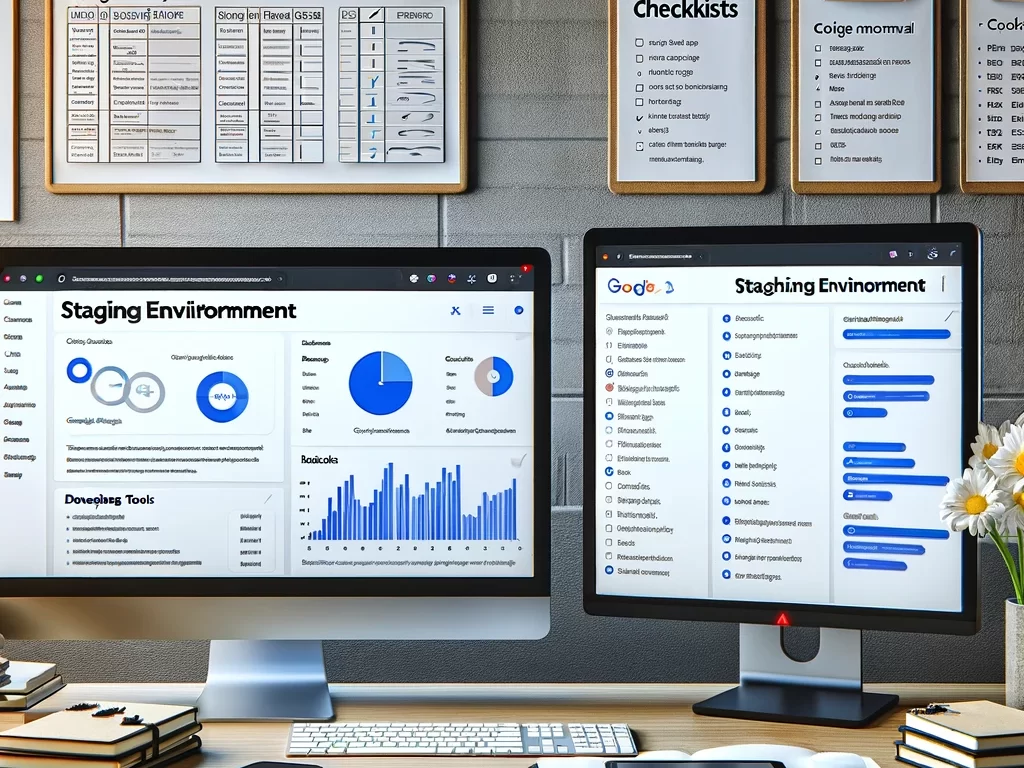Why a Staging Environment is Crucial for Your Google Analytics Setup
Whether you’re a digital marketer, a data analyst, or a business owner, ensuring the accuracy and reliability of your Google Analytics data is critical. One of the foundational elements in achieving this is the implementation of a staging environment. Let’s explore why establishing a staging environment is a non-negotiable component of a robust Google Analytics setup.
Google Analytics: The Heartbeat of Data-Driven Decision Making
Google Analytics allows businesses to track website performance, understand customer behaviour, and measure the effectiveness of online strategies. Given its centrality to data-driven decision-making, any errors in the setup could lead to costly misinterpretations. This is where a staging environment comes in.
What is a Staging Environment?
A staging environment is a clone of your live website where you can implement and test changes without affecting the actual site. This intermediary step is a playground for developers, analysts, and marketers to ensure that every tweak to the tracking code or update to the site does not introduce errors or skew analytics data.
Benefits of a Staging Environment for Google Analytics
- Safeguarding Data Integrity By testing changes in a staging environment, you catch errors before they go live—preventing corrupted data and maintaining the integrity of your Google Analytics metrics.
- Accuracy in Tracking Implementation With the complexity of Google Analytics configurations, staging environments allow you to carefully vet all tracking tags, ensuring that user interactions are accurately captured.
- Avoiding Downtime During Updates Implementing updates directly on a live site can lead to temporary downtime or poor user experience. A staging site allows you to refine the deployment process, minimizing disruptions on the actual site.
- Seamless Third-Party Integration Before integrating new marketing tools or third-party services, a staging environment allows you to test the compatibility and refine data collection processes without impacting live data collection.
- Optimising User Experience Testing UI/UX changes first in a staging environment means you can enhance user experiences based on actual data and insights obtained through Google Analytics without risking your live site’s performance or customer satisfaction.
Best Practices When Using a Staging Environment
- Replicate the Live Environment: Ensure that the staging environment closely mirrors the live site to test features accurately.
- Use Realistic Data: Populate the staging environment with a sample of real data to effectively simulate and test analytics configurations.
- Regularly Sync Changes: Keep the staging environment up-to-date with any changes made in the live environment.
- Exclude Staging Data: Make sure to filter out any tracking data from the staging environment in your Google Analytics views to maintain clean data.
- Document Changes: Keep a detailed record of tests and modifications made in the staging environment to replicate them correctly on the live site.

Conclusion: A Worthy Investment for Accurate Analytics
While setting up a staging environment does require additional resources, the return on investment is clear. Every decision your business makes guided by Google Analytics data can potentially save or earn substantial revenue. The staging environment protects the data that informs those decisions, making it a cornerstone of trustworthy digital analytics.
Is it worth having a staging environment for Google Analytics? Absolutely. The initial effort pays dividends in the long run by ensuring that your data remains accurate, relevant, and reliable.
Are you ready to set up a Google analytics Staging environment that can protect your business analytics into the future? Accelerate your growth and competitiveness with accurate analytics. Contact our team to explore the analytics solutions that will take your business to the next level.